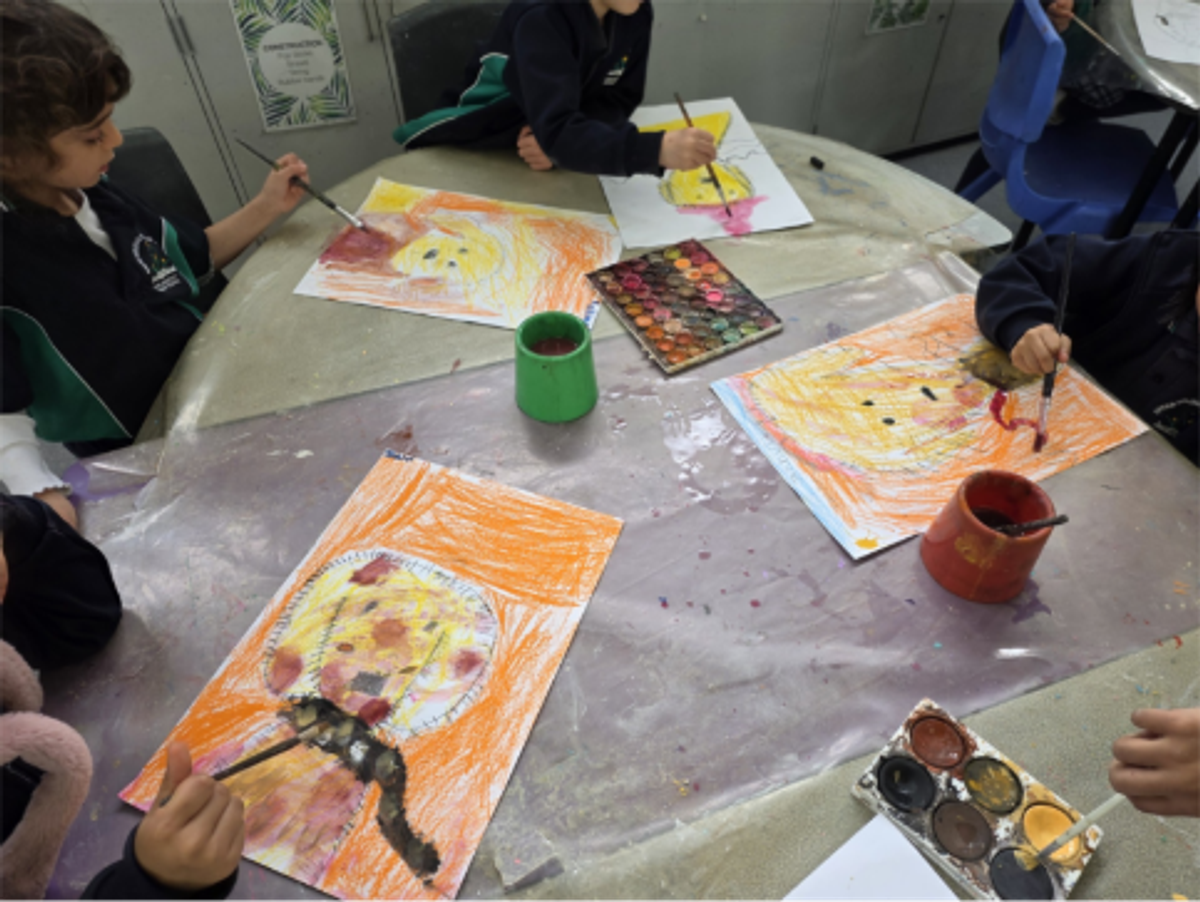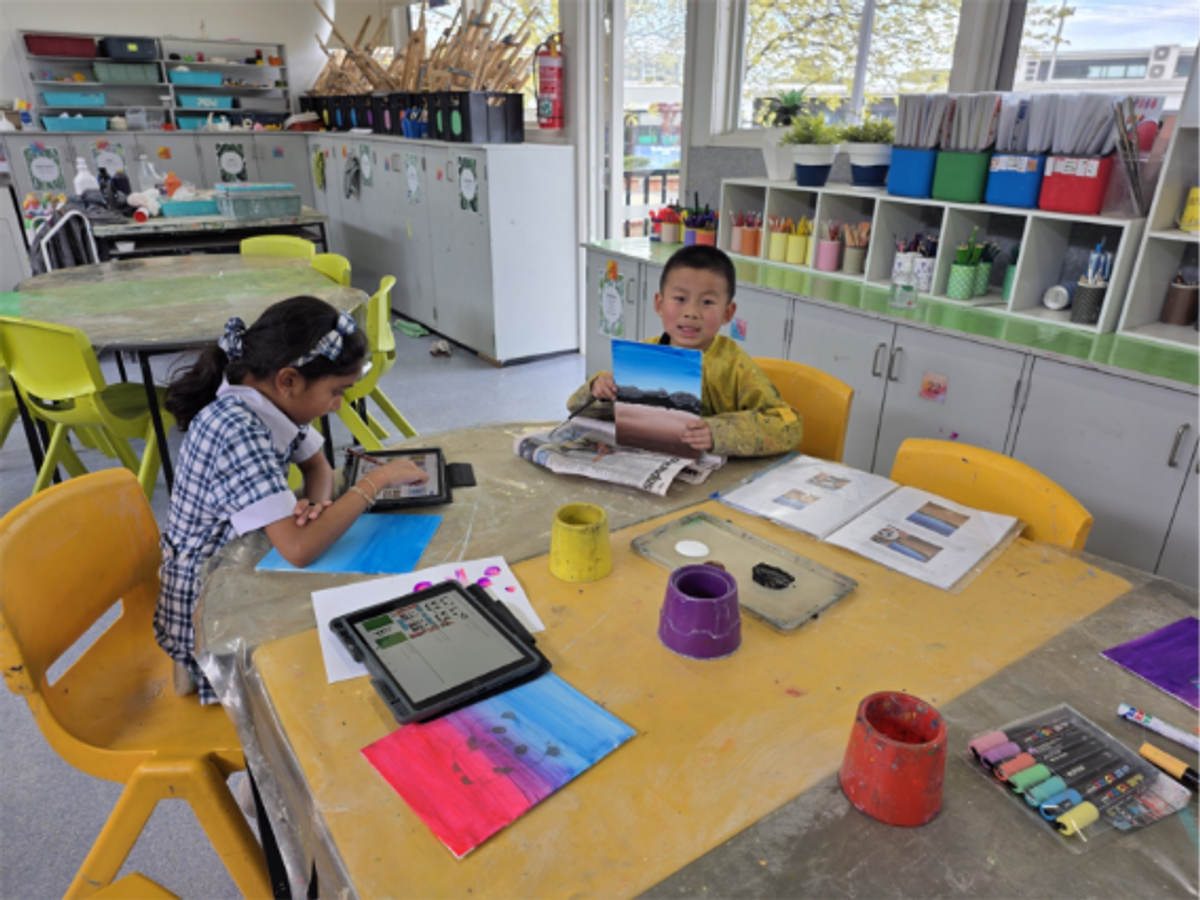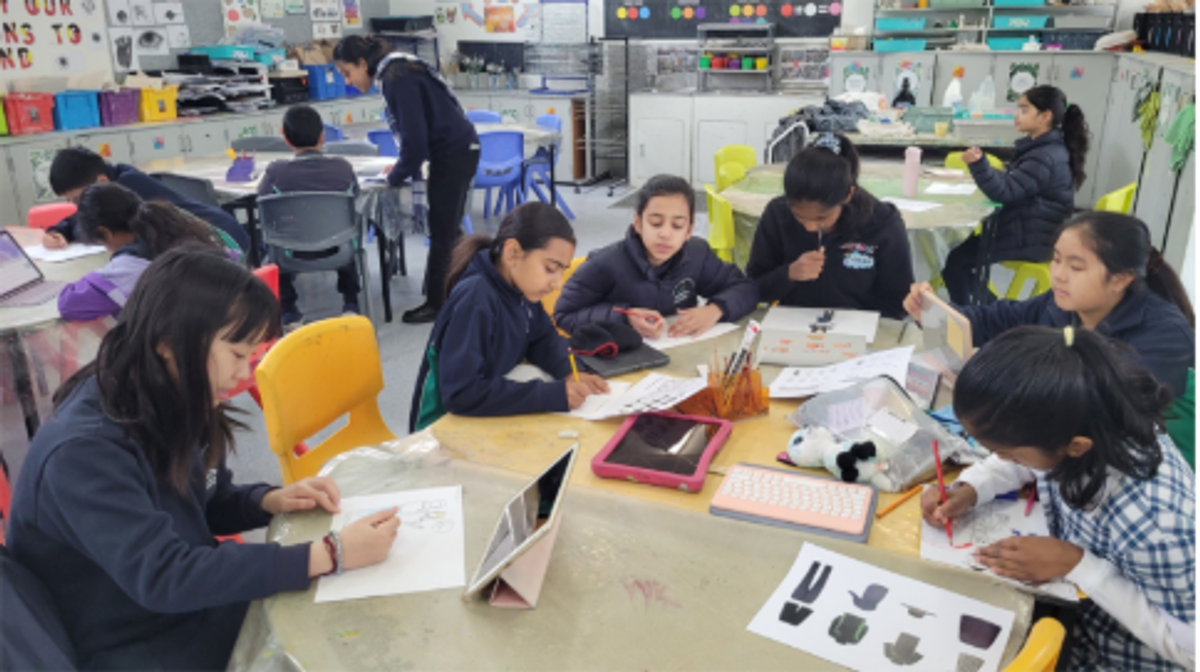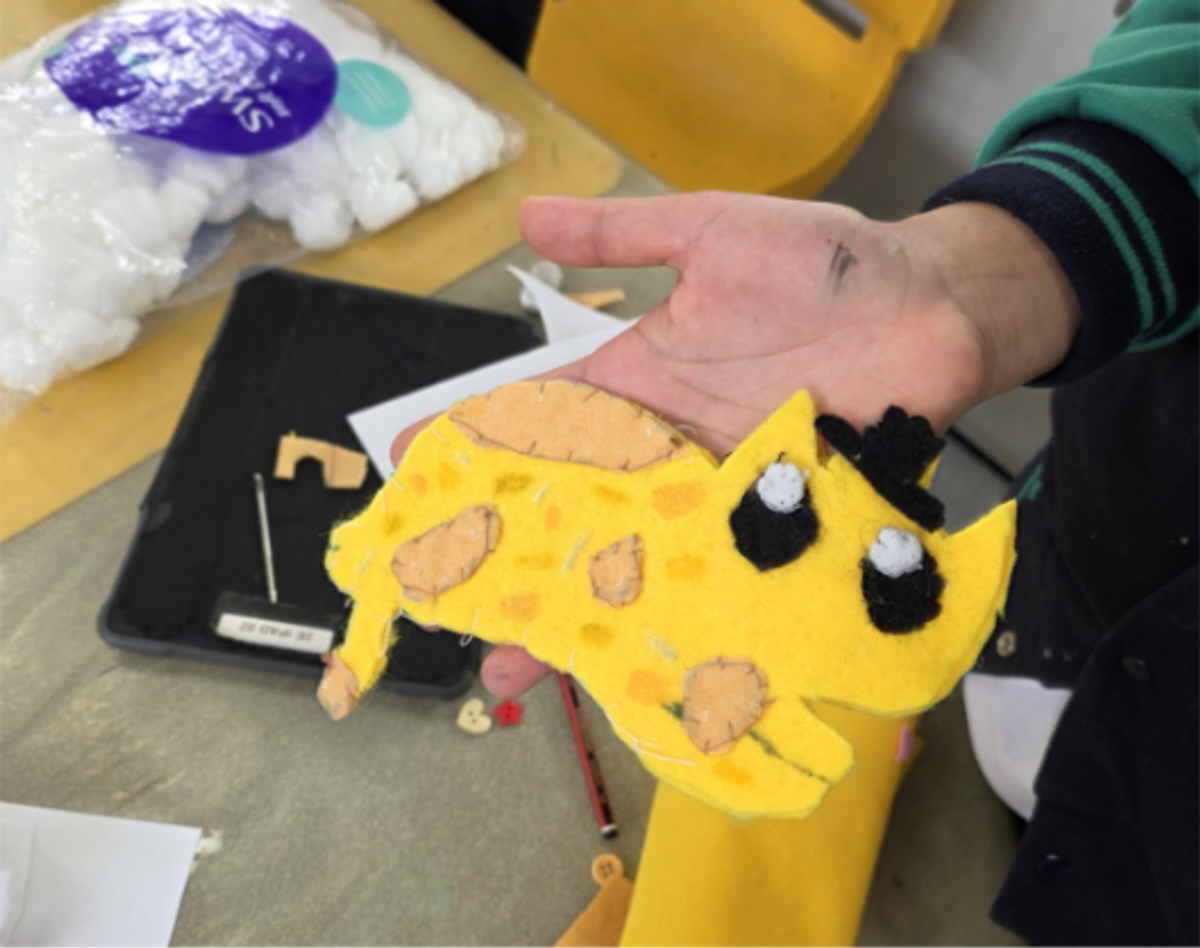Visual Art
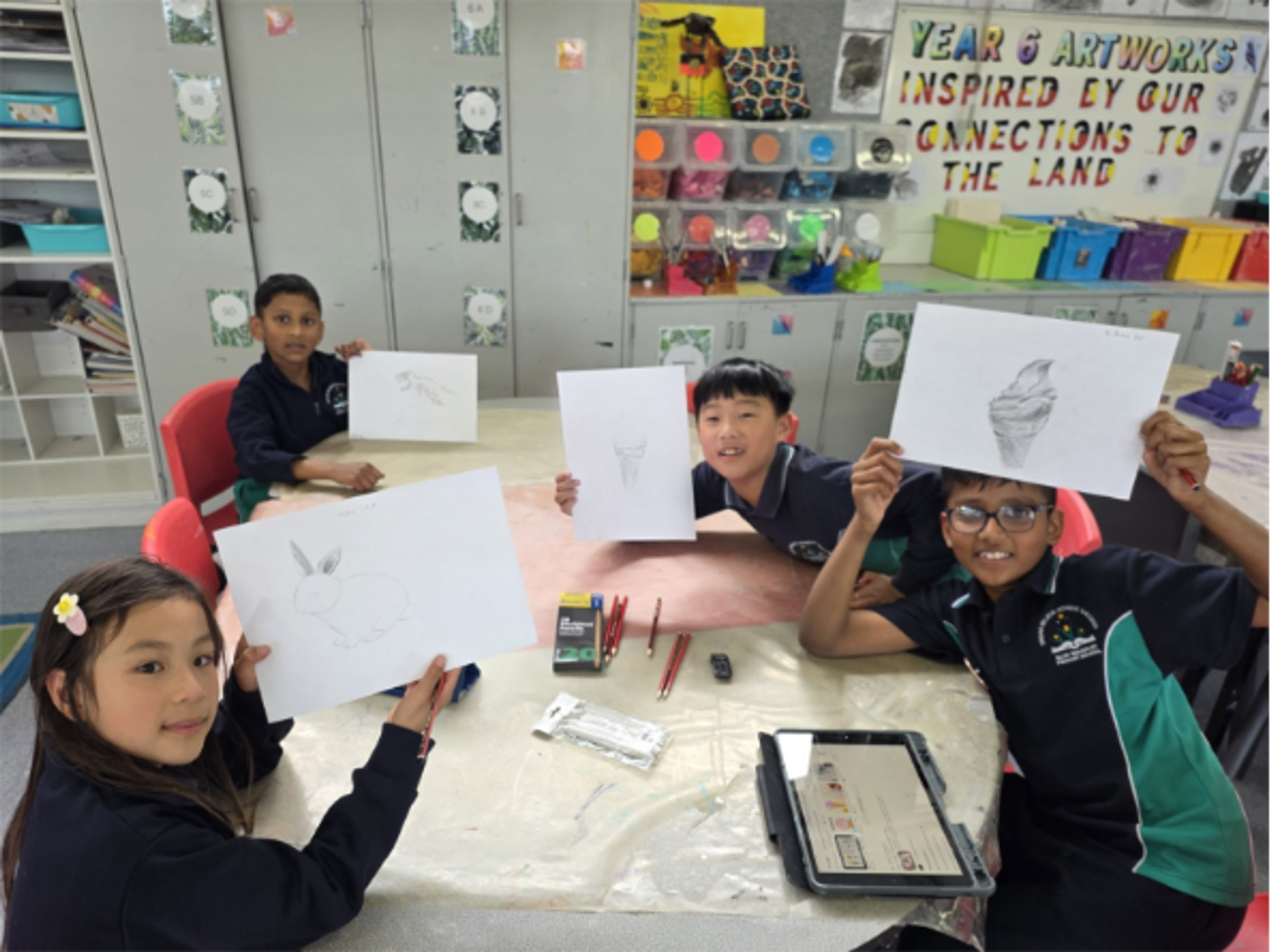
Welcome to the start of Term Four! I trust you had a fantastic holiday filled with cherished moments with your loved ones. As we begin this term, we’re gearing up for another thrilling adventure in the world of art. We’ll continue delving into creative exploration and refining our technical skills through a range of materials and processes.
Prep
In Term 4, Prep students will celebrate their Prep journey by designing and painting their own Prep Prom T-shirts. They will be using acrylic fabric paints and experimenting with a variety of painting techniques. During the second half of the term, students will explore the picture storybook Arlo Needs Glasses by Barney Saltzberg. Through this text, they will learn about celebrating and accepting differences and will express these ideas in their own artworks using a range of mixed media materials.
Curriculum Links:
- Explore how and why the visual arts are important for people and communities VC2AVAFE01
- Explore ideas for artworks through play and visual arts processes VC2AVAFE02
Create artworks that communicate experiences, ideas and observations and explore meaning VC2AVAFC01
Key Vocabulary: techniques, brushstrokes, fabric paint, mixed-media
Year 1
This term, students will begin by completing their collaborative class mural. Each student will design a tile (a small section of a larger tree), using their understanding of the art elements to consider the question: What story does my tree tell? Alongside this, they will explore the history and purpose of murals, investigating who creates them and why.
Through this project, students will develop an appreciation of the cultural and social significance of mural art. In the second half of the term, students will shift their focus to sculpture, creating a dragon eye using hand-building techniques with polymer clay. They will also explore the significance of dragons and the symbolism they hold in Chinese culture, connecting their practical skills with cultural understanding.
Curriculum Links:
- Explore where, when, why and how people across cultures, communities, times, places and/or other contexts experience visual arts, including artworks created by Aboriginal and Torres Strait Islander Peoples VC2AVA2E01
- Explore ways of using visual conventions, visual arts processes and materials VC2AVA2D01
- Use visual conventions, visual arts processes and materials to create artworks that communicate ideas, experiences and observations VC2AVA2C01
Key Vocabulary: mural, art elements, hand building, polymer clay
Year 2
In Term Four, students will advance their skills by creating self-portraits with various patterns. They will experiment with different mediums and techniques, including watercolour resist, oil pastels, watercolour layering, sgraffito, and acrylic paint layering. They will also explore patterns using optical illusions. For their final self-portrait, students will select their favourite background and apply colour to their facial features, clothing, and hair. They will consider different colour groups, such as complementary colours, warm and cool colours, and analogous colours, to enhance their artwork.
Curriculum Links:
- Explore where, when, why and how people across cultures, communities, times, places and/or other contexts experience visual arts, including artworks created by Aboriginal and Torres Strait Islander Peoples VC2AVA2E01
- Explore ways of using visual conventions, visual arts processes and materials VC2AVA2D01
Use visual conventions, visual arts processes and materials to create artworks that communicate ideas, experiences and observations VC2AVA2C01
Key Vocabulary: watercolour resist, water colour, acrylic, self-portrait, analogous colours
Year 3
In Year Three, students will draw inspiration from Torres Strait Islander culture to design and create their own pinch pots. They will learn a range of hand-building techniques, including forming a pinch pot, using the slip-and-score method to securely attach clay pieces, and applying smoothing techniques for a refined finish. As they work, students will incorporate chosen textures to highlight and showcase their developing skills. Following the construction stage, students will focus on the art element of colour by experimenting with different painting materials such as watercolour and acrylics. This process will allow them to explore colour application in new ways and enhance their creative expression through their finished pinch pots.
Curriculum Links:
- Explore how Aboriginal and Torres Strait Islander Peoples use visual arts to communicate their connection to and responsibility for Country and Place VC2AVA4E02
- Use visual conventions, visual arts processes and materials to create artworks that communicate ideas, perspectives and meaning VC2AVA4C01
Key Vocabulary: pinch pot, slip-and-score, smooth, texture, colour, line, shape
Year 4
This term, students will be exploring the art movement Surrealism. They will investigate the meaning and key ideas of this style, study the work of artists such as Salvador Dalí and René Magritte, and examine how Surrealism continues to influence modern art, television, and film. Drawing on this knowledge, students will then create their own surrealist-inspired artwork, selecting from a range of materials to suit their individual ideas and creative choices.
Curriculum Links:
- Explore ideas and artworks from different cultures and times as inspiration to create visual artworks (VCAVAE025)
- Explore visual conventions and use materials, techniques, technologies and processes specific to particular art forms, and to make artworks (VCAVAV026)
- Identify and discuss how ideas are expressed in artworks from a range of places, times and cultures, including artworks by Aboriginal and Torres Strait Islander peoples (VCAVAR028)
Key Vocabulary: Surrealism, Salvador Dali, René Magritte, modern art
Year 5
In Year Five, students will embark on a journey to refine their painting skills, focusing on their clay sculptures. Building upon the foundation of painting skills they developed in the first semester, they will now explore a new medium, expanding their artistic horizons even further. They will be using a combination of watercolour and acrylic paint and comparing the two mediums and their impact on their designs. Students will also be comparing their experiences in painting on canvas versus on clay. Throughout the second half of term four, students will be exploring optical illusions. They will be experimenting with perspective, depth, light and contrast, size and patterns to create an optical illusion.
Curriculum Links:
- Develop visual arts skills by experimenting with visual conventions, visual arts processes and materials VC2AVA6D01
- Plan and create artworks using visual conventions, visual arts processes and materials to communicate ideas, perspectives and meaning VC2AVA6C01
Key Vocabulary: medium, mixed-media, art elements, optical illusions
Year 6
This term, students will create an artwork of their choice on the theme of graduation. They may produce a technical drawing with a focus on shading (e.g., a graduation cap, scroll, or a self-portrait) or choose another medium that suits their idea. Each piece will reflect the student’s personal journey, capturing emotions, gratitude, lessons learned, and memorable moments from Prep to Year 6. Students will use symbolism and the elements of art to communicate their ideas with clarity and impact.
Curriculum Links:
- Explore ways that visual conventions, visual arts processes and materials are used to communicate ideas, perspectives and meaning in visual arts practices across cultures, times, places and other contexts, including from Aboriginal and Torres Strait Islander Peoples VC2AVA6E01
- Develop visual arts skills by experimenting with visual conventions, visual arts processes and materials VC2AVA6D01
- Plan and create artworks using visual conventions, visual arts processes and materials to communicate ideas, perspectives and meaning VC2AVA6C01
Key Vocabulary: self-identity, artistic symbolism, technical drawing, art elements
How can you support your child’s art learning at home?
- Explore different themes: Introduce your child to a wide range of art styles, artists, and cultural art forms from around the world. This broadens their artistic horizons and fosters cultural appreciation.
- Experiment with a range of materials to develop different techniques from different mediums. Providing them with diverse materials will help foster their creativity and expand their artistic skill set.
- Ask Open-Ended Questions: Engage your child in discussions about their artwork. Ask open-ended questions like, "What inspired this piece?" or "Tell me about your creative process." This helps them articulate their thoughts and ideas.

